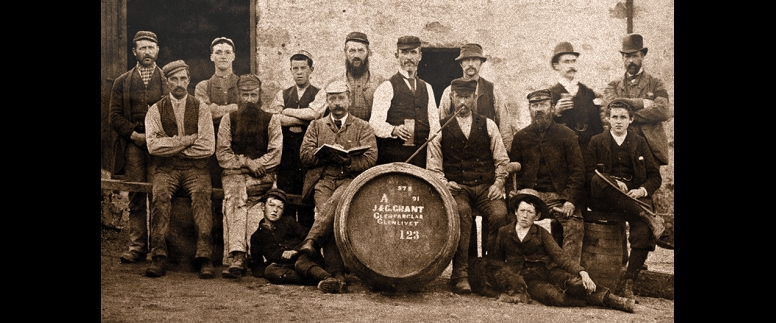
With great and grand apologies to the Scots and Irish, we at American Bars completely neglected to celebrate World Whisky Day on the 20th of May. However, it is never too late to raise a toast of the drink to the drink.
Whether it’s illicit distilling, the Whisky Rebellion, or Prohibition, whisky is a drink that has always had something of the outlaw about it. As with all the great heroes of legend, strict adherence to historical fact has not always been essential to the telling of its story ...
As much as one might dream of the ancients imbibing in 100 proof, there is no firm evidence of the distillation of alcohol before the the Salerno School of southern Italy in the 12th century. Not to worry, the Middle Ages distillery can at least 5,000 years after barley beer was being brewed and at least around 6,000 years after the first wines were fermented; the ancients did well on their own.
We are ever beholden to those beneficent brothers of Catholicism, the monks, for discovering and refining the golden elixir. Thanks to the monasteries, those medieval powerhouses of knowledge, distilling techniques were crafted, preserved, further developed and disseminated throughout Europe. The word ‘whisky’ actually testifies to this monastic heritage – ‘water of life’ was a general term used across the Christian word for distilled spirits, more commonly rendered as aqua vitae in Latin. The term survives today in drinks such as eau de vie (France), acquavita (Italy), akvavit (Scandinavia) and okowita (Poland). Rather than being some ancient Celtic elixir, it’s likely that the ancestor of modern whisky developed some time in the late middle ages, in the monasteries of Ireland, as if you couldn’t have guessed.

What is true, however, is that whisky has a long and proud tradition of being distilled on the sly. In Ireland, the first license to distill was granted in 1609 to a Sir Thomas Phillips. A license, however, was hardly considered a must-have by the ‘rebellious Irish’, who by then already had a tradition of distilling in the home. There soon developed a distinction, therefore, between ‘Parliament whisky’, distilled under license from the Crown, and ‘poteen’, distilled under license from no one, except perhaps God. Throughout the storms which battered the legal Irish whisky industry over the centuries, small-scale illicit poteen distilling proved much more robust. According to Heidi Donelon, an Irish whisky historian and founder of the Ireland Whiskey Trail, in 1779, when the number of licensed distilleries in Ireland plummeted to just 20, County Donegal alone was home to around 800 illegal stills.
In Scotland, meanwhile, as in England, the first taxes on distilling were introduced in the 17th century. Excise on spirits became well established, and continued throughout the 18th and 19th centuries. Naturally, there developed a thriving illicit industry, primarily in the Highlands regions, and the legendary tussles between the wily illicit distiller and the excise man have become an essential part of whisky folklore.
Many accounts of crafty ruses, colorful characters and improbable escapes are recorded in Gavin Smith’s book The Secret Still. Highlights include ‘Sarah of the Bog’, a West Highland lady alleged to have masqueraded as a witch to keep nosy neighbors away from her still (before one day tragically staggering drunk into her own furnace); and Magnus Eunson, an infamous Orkney smuggler, known for his quick thinking and habit of hiding his contraband stash in pulpits and under coffins, among other places. Other accounts include barrels hidden beneath broody hens, barrels hidden in funeral corteges and barrels ‘nursed’ by breastfeeding mothers. Of course, for an illicit distilling enterprise to survive, the first requirement was a well-hidden still. While sometimes a remote sea cave or a treacherous bog, navigable only by locals, would do the job, on other occasions a more intricate arrangement was called for. One account in Smith’s book, dating from 1824, describes an ingenious set-up, with a still hidden in an underground cavern, beneath a trap door covered with earth, with water supplied by a subterranean stream, and its smoke diverted through the chimney of a cottage some distance away.
Do we have your attention? Come back tomorrow for the rest of our tribute to Whisky history.




